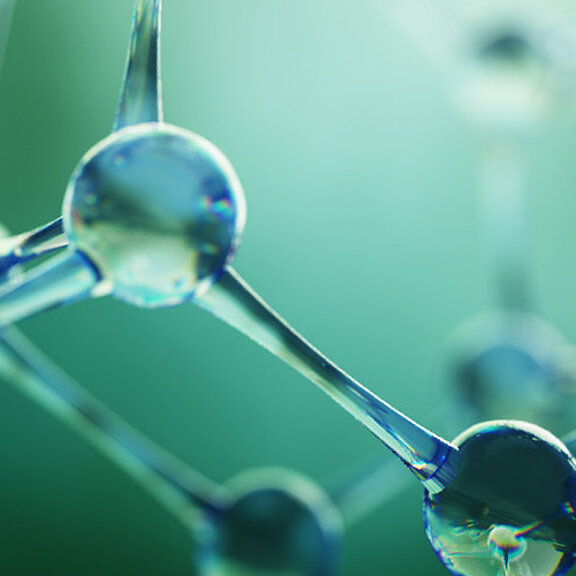

Everybody is talking about hydrogen. This is because hydrogen is regarded as an ideal energy carrier and energy storage medium. It therefore plays an important role in the energy transition.
Green hydrogen is needed in particular. Green hydrogen is produced using renewable energies emissions-free and can be converted back into electrical energy just as emission-free.
However, in order to meet the growing demand for hydrogen, a number of challenges still need to be overcome, e.g. on issues of electrical safety. Bender offers its expertise here to support you with your hydrogen applications.
A high level of electrical energy is required for hydrogen production using electrolysis. Electricity is generated when hydrogen is utilised in fuel cells.
People and systems must be protected from the dangers of electric current. The technical challenges for the safe operation of electrolysers and fuel cells are considerable. Particularly in electrolysis systems, there are currently areas that are not described in a standard or safety regulation. For this reason, a customised safety concept must currently be developed for each project.
Read more about this in our broschure "Hydogen - Electrically safe from production to the end consumer".
To ensure that the goals of the hydrogen ramp-up can be achieved, Bender is working with partners from industry and science to contribute to the creation of a standard for the electrical safety of electrolysers.
During electrolysis, water is broken down into its two components, hydrogen and oxygen, using an electric current. Depending on the size of the electrolysis systems used, very high currents flow (sometimes in the kA range). Due to these high currents, special safety requirements are placed on electrolysis systems.
In fuel cells, hydrogen is converted into electricity with the addition of oxygen. Therefore, the relevant standards and regulations for the safe operation of electrical systems must be observed when using fuel cells. The requirements vary depending on the design and intended use of the fuel cells.
For electrically safe and reliable operation of electrolysers and fuel cells, it is advisable to plan for permanent insulation fault and residual current monitoring from the outset when planning the system. Only permanent monitoring for insulation faults and residual currents can guarantee safe and predictable operation.
For more than 75 years, Bender has been a pioneer and market leader for solutions that make electricity intelligent and safer. Our experience and mature technologies have played an important role in the technical developments of recent years and decades. For example, in the transformation of the energy sector and electromobility.
Bender also offers solutions for electrically safe operation in the field of hydrogen production and utilisation. We are also actively involved in the relevant standardisation committees in order to create the framework conditions required for the development and production of safe hydrogen applications.
Customised solutions and concepts
Implementation of a holistic safety concept with the following components of the protection objectives:
System protection
Protection against thermal effects
Protection against the dangers of electricity

For further information please contact Roman Schmattloch.
e-mail to Roman SchmattlochHydrogen is the most abundant and lightest chemical element in the universe. At room temperature it is a colourless gas. Hydrogen is also an important chemical raw material.
Natural deposits of hydrogen are rare on earth and are generally not technically or economically viable. Hydrogen must therefore be extracted from existing substances and compounds. There are different procedures for this. A frequently used process is electrolysis, in which water is broken down into its two components, hydrogen and oxygen, using an electric current.
Hydrogen can be produced in very different ways and from different starting materials. Many processes for producing hydrogen are not climate-neutral. Green hydrogen is obtained through the electrolysis of water. In this process, water is broken down into its two components, hydrogen and oxygen. The electricity required for electrolysis comes exclusively from renewable energy sources.
It is by far the "cleanest" hydrogen. This is because neither the production process using electrolysis nor the generation of the electricity required for it pollutes the environment with climate-damaging exhaust gases. Only electricity from renewable energy sources is used to produce green hydrogen.
The production of green hydrogen is currently still relatively expensive compared to other methods of hydrogen production. There are also some technical challenges to overcome.
Electrolysis requires a great deal of energy, which must be supplied to the electrolyser from renewable energy sources. The high electrical current for operating an electrolyser requires correspondingly large supply cable cross-sections and special safety concepts to protect against the dangers of electrical current. But the downstream process technology, such as pumps, compressors and dryers, must also be designed for hydrogen.
Bender has been a pioneer and market leader in insulation monitoring solutions for more than 75 years. Bender is helping to make the production of green hydrogen by electrolysis safer and more efficient.
Insulation monitoring technology supports the operational safety of electrolysers. We also offer solutions for (offline) monitoring of critical process technology systems such as pumps, compressors and dryers to ensure they are ready for use when they are needed.